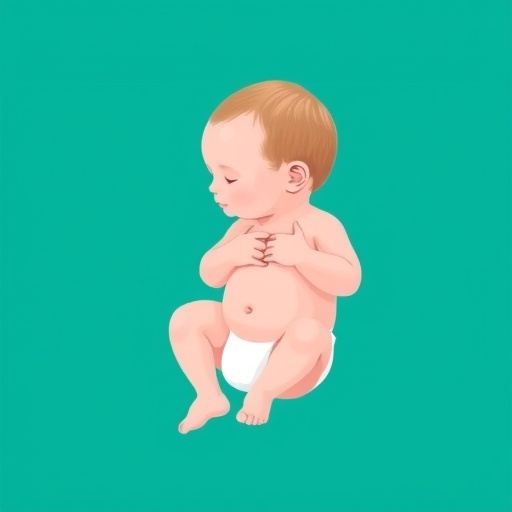
In an era where non-invasive diagnostic technologies are revolutionizing patient care, a groundbreaking study has harnessed the power of machine learning and arterial pulse wave analysis to offer new insights into coronary artery calcification (CAC) assessment, particularly for patients with end-stage renal disease (ESRD) undergoing hemodialysis. This novel research integrates bioengineering and artificial intelligence to address a formidable cardiovascular risk in a vulnerable patient population, potentially transforming how CAC severity is detected and monitored without resorting to invasive measures.
Coronary artery calcification has long been recognized as a predictor of adverse cardiovascular events, especially in patients with ESRD who are undergoing regular hemodialysis. These patients exhibit an elevated risk due to disturbed mineral metabolism and vascular changes associated with renal failure. Traditionally, CAC assessment relies on imaging techniques such as computed tomography (CT), which, despite their accuracy, expose patients to radiation and require expensive equipment. This limitation underscores the urgent need for alternative, non-invasive diagnostics that can seamlessly integrate into routine patient monitoring.
The study in question ventures into the promising domain of pulse wave analysis, specifically focusing on radial artery waveforms. The underlying premise is rooted in vascular physiology—the arterial pulse waveform contains detailed information reflecting arterial stiffness, elasticity, and overall vascular health. By capturing and interpreting these waveforms, researchers hypothesized that they could infer the extent of coronary artery calcification indirectly. This approach offers the advantage of being patient-friendly, providing real-time data without discomfort or risk.
A cohort of 58 patients with ESRD undergoing hemodialysis participated in this investigation. CAC severity was initially evaluated using low-dose computed tomography, a method that quantifies calcium deposits in coronary arteries via Agatston scores. Patients were then stratified into four categories: no calcification, mild, moderate, and severe. The longitudinal capture of radial artery pulse waveforms before, during, and after hemodialysis sessions allowed for an unparalleled temporal analysis of arterial pulse dynamics within and across these CAC severity groups.
Intriguingly, distinct morphological differences emerged across the different CAC groups. The pulse waveforms of patients with no calcification exhibited a prominent main wave followed by clear tidal waves—secondary wave patterns indicative of healthy vascular compliance and wave reflection. Conversely, those with increasing calcification demonstrated progressive attenuation and blurring of these tidal waves, resulting in smoother but less complex waveforms. Such findings indicate that vascular calcification dampens arterial pulsatility and modifies the characteristic waveform shape, reinforcing the link between mechanical changes in arteries and measurable pulse wave properties.
Digging deeper into the data, key features of the pulse waveforms were meticulously extracted and analyzed. These features encapsulated waveform morphology, the descending limb of the pulse, complexity indices, signal distribution, mean values, and dynamic characteristics captured over the hemodialysis process. The temporal aspect was critical, as hemodialysis itself influences hemodynamics and vascular tone, thus providing a robust testing ground for assessing the stability and sensitivity of pulse wave-derived features in reflecting CAC severity.
To translate these rich physiological signatures into actionable diagnostic capability, the researchers deployed a gradient boosting decision tree (GBDT) model—a powerful machine learning algorithm known for its versatility and high accuracy in classification tasks. This approach allowed complex non-linear relationships in the multi-dimensional pulse wave data to be discerned and leveraged for predicting CAC severity categories. The model was evaluated through rigorous fivefold cross-validation and testing on an independent dataset, ensuring the robustness and generalizability of its performance.
The results were striking. The GBDT model achieved an overall accuracy exceeding 84% and a macro-area under the curve (macro-AUC) of approximately 0.96, indicating excellent discriminative ability across all CAC severity classes. Notably, the algorithm excelled in identifying patients with severe coronary calcification—an especially critical clinical subgroup due to their heightened cardiovascular risk profile. Such performance metrics confirm the model’s promise as a non-invasive tool to assist clinicians in stratifying CAC severity among ESRD patients without relying on CT imaging.
Beyond the impressive accuracy figures, the study sheds light on the physiological underpinnings of vascular calcification’s impact on pulse waveforms. The disappearance or smoothing of tidal waves in severe CAC cases corresponds to increased arterial stiffness and reduced wave reflection—dynamics classically associated with deteriorating vascular compliance. This physiological insight not only validates the machine learning outcomes but also enriches our understanding of how vascular pathology manifests in biomechanical signals captured non-invasively.
Moreover, the study underscores the dynamic nature of pulse wave features throughout hemodialysis sessions. As fluid shifts and vascular tone fluctuate during treatment, pulse waveform characteristics evolve, highlighting the necessity to consider temporal changes and the interplay between treatment-induced hemodynamics and underlying vascular health. Such a nuanced view enhances the applicability of pulse wave analysis in real-world clinical scenarios, where continuous monitoring can afford a more comprehensive cardiovascular risk assessment.
This innovative fusion of pulse wave physiology and machine learning paves the way for future multimodal diagnostic platforms. Imagine wearable sensors capturing continuous radial pulse data, feeding into trained algorithms that alert physicians to escalating vascular calcification or other early signs of cardiovascular compromise in ESRD patients. Such advancements embody the shift towards personalized, predictive medicine and hold promise for reducing cardiovascular morbidity and mortality through earlier intervention.
Despite these groundbreaking findings, acknowledging the study’s limitations is essential. The relatively modest sample size and single-center design may necessitate further validation in larger, diverse cohorts to ensure broad applicability. Additionally, the reliance on low-dose CT as a reference standard, while clinically accepted, still involves radiation exposure and offers only a snapshot of the calcification burden. Future research integrating other biomarkers or imaging modalities could refine the machine learning model’s predictive performance.
In conclusion, the research offers compelling evidence that radial artery pulse wave analysis, augmented by sophisticated machine learning models, can serve as an effective, non-invasive adjunct for assessing coronary artery calcification severity in ESRD patients undergoing hemodialysis. This approach not only mitigates reliance on costly and invasive imaging but also opens avenues for continuous vascular health monitoring. The intersection of bioengineering, artificial intelligence, and clinical nephrology showcased here exemplifies the transformative potential of interdisciplinary collaboration in advancing patient care.
As cardiovascular diseases remain the leading cause of mortality globally, especially among patients with chronic kidney disease, such innovative diagnostic methodologies are critically needed. This study’s contributions could catalyze a paradigm shift in cardiovascular risk stratification and management, emphasizing non-invasive, accessible, and real-time assessment tools. As the research community embraces these technological strides, patients stand to benefit from earlier diagnosis, tailored therapies, and ultimately improved outcomes.
—
Subject of Research: Non-invasive assessment of coronary artery calcification severity using machine learning analysis of radial artery pulse waveforms in ESRD patients undergoing hemodialysis.
Article Title: Pulse wave-driven machine learning for the non-invasive assessment of coronary artery calcification in patients with end-stage renal disease undergoing hemodialysis.
Article References:
Wang, Y., Yang, L., Li, Z. et al. Pulse wave-driven machine learning for the non-invasive assessment of coronary artery calcification in patients with end-stage renal disease undergoing hemodialysis. BioMed Eng OnLine 24, 104 (2025). https://doi.org/10.1186/s12938-025-01436-y
Image Credits: AI Generated
DOI: https://doi.org/10.1186/s12938-025-01436-y
Tags: advancements in patient care technologyalternative imaging methods for CACarterial stiffness measurement techniquesartificial intelligence in diagnosticsbioengineering innovations in medicinecardiovascular risk assessment in ESRDhemodialysis patient monitoringmachine learning in healthcarenon-invasive coronary artery calcification detectionpulse wave analysis technologyrenal failure and cardiovascular diseasevascular health and mineral metabolism




